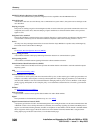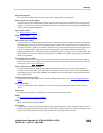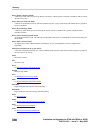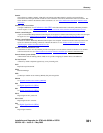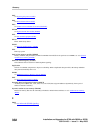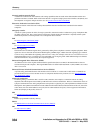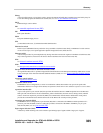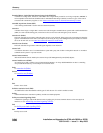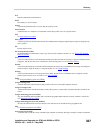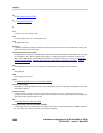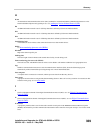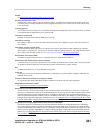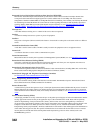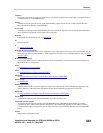
Glossary:
336
Installation and Upgrades for G700 with S8300 or S8700
555-234-100 — Issue 3 — May 2003
Extended Binary-Coded Decimal Interexchange Code (EBCDIC)
A scheme for coding letters, characters, and numbers into a digital binary stream for use in large computers. EBCDIC is
not incompatible with American Standard Code for Information Interchange (ASCII), but the two types of files can be
converted with a translation program. See also American Standard Code for Information Interchange (ASCII)
.
extended superframe format (ESF)
A T-1 framing standard that is used in wide area networks (WANs).
extension
A number from 1 digit to 5 digits that is used to route calls through a communications system. With a Uniform Dial Plan
(UDP) or a main-satellite dialing plan, extensions are also used to route calls through a private network.
extension-in (ExtIn)
The work state that an agent enters when the agent receives a non-ACD call. If the agent receives an ExtIn call when the
agent is in the Manual-In work mode or the Auto-In work mode, the Avaya Call Management System (CMS) records the
call as an AUX-In call. See also
auto-in work mode; manual-in work mode.
extension-out (ExtOut)
The work state that an agent enters when the agent originates a non-ACD call.
external call
A connection between a user of a communications system and a party who is either on the public network or on another
communications system in a private network.
external measurements
ACD measurements that are made by the external Avaya Call Management System (CMS) adjunct.
external media server (EMS)
An external server that is running Avaya Communication Manager. An Avaya S8700 Media Server that is controlling
Avaya G700 Media Gateways is an example of an external server.
ExtIn
See
extension-in (ExtIn).
ExtOut
See
extension-out (ExtOut).
F
FAC
Feature Access Code
facilities restriction level (FRL)
An administered value that identifies which types of calls the user of a switch is entitled to make.
facility
A telecommunications transmission pathway and the associated equipment.
facility-associated signaling (FAS)
A method of signaling in which a D-channel carries signaling only for those channels that are on the same physical
interface. See also
nonfacility-associated signaling (NFAS).
FAS
See
facility-associated signaling (FAS).
FAT
Facility access trunk



